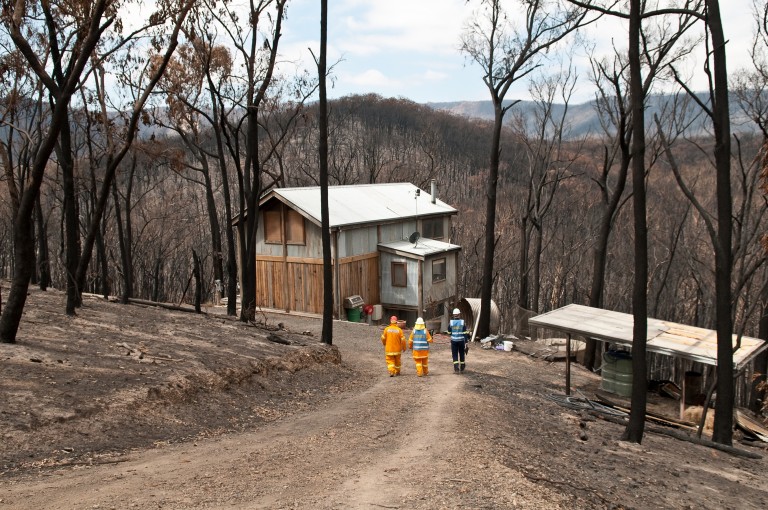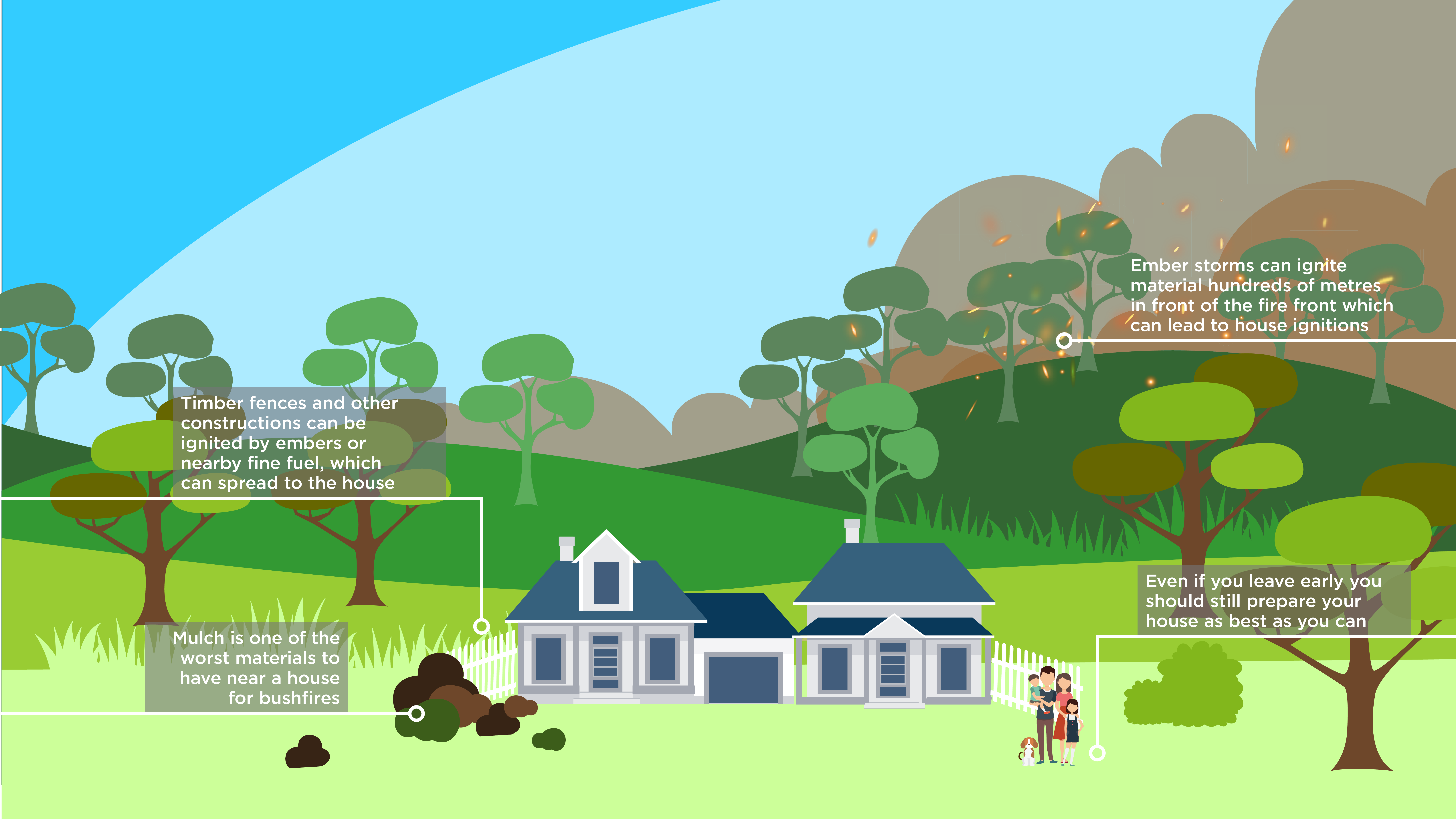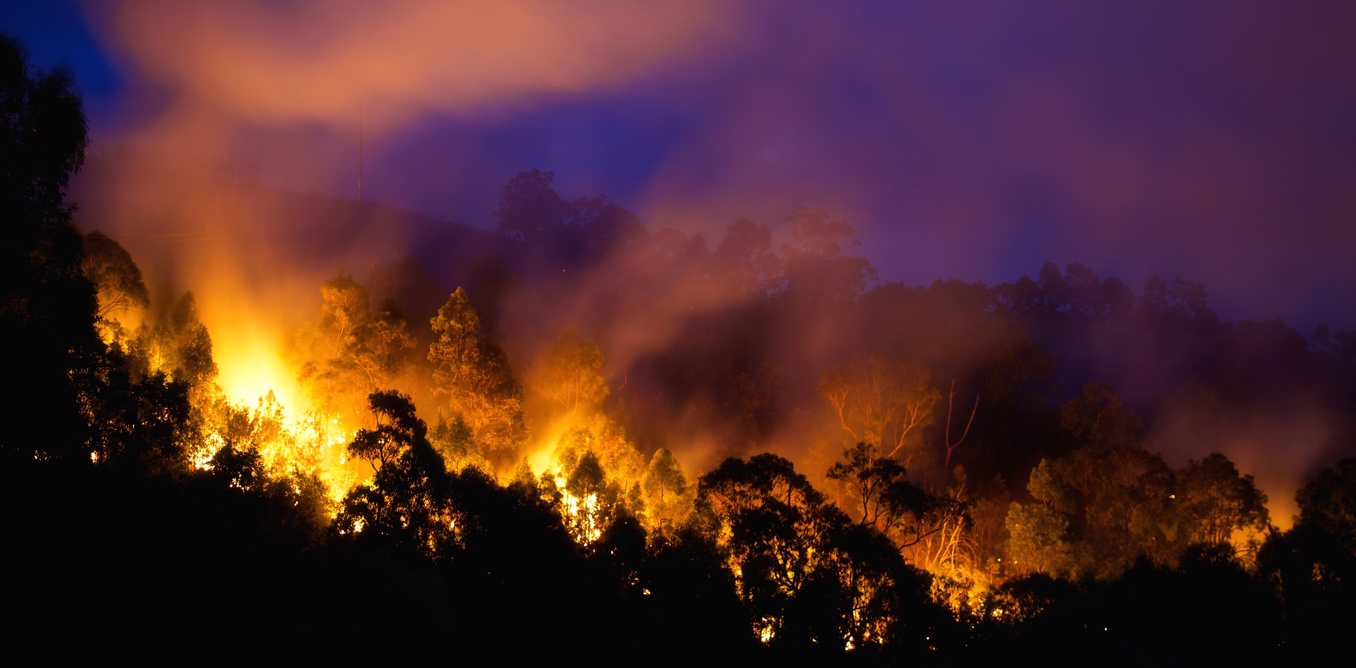
Picture of bushfire.
Fire researchers investigate a property at Strathewen that survived the Black Saturday bushfires. Credit: Nick Pitsas
Updated 6 January 2020
Large parts of Australia are currently facing extreme bushfire conditions. No property can ever be completely safe from bushfire, but there are some ways to address some of the weak links a bushfire may exploit. One of our bushfire experts, Justin Leonard, has decades of experience in understanding how we can manage bushfire risk to life and infrastructure. He provides these steps to help prepare your home.
Your house can be at risk even if it isn’t directly exposed to bushfire
At least 85 per cent of houses are destroyed without experiencing direct exposure to flames or significant radiation from a bushfire front. For these houses, ember attack and low-level surface fire either directly ignites or enters the house. Or fire ignites nearby combustible elements that then threaten the house. So even if your house doesn’t directly border bushland, it is still important you do everything you can to safeguard it.
Clear your house of excess mulch
Mulch is one of the worst materials to have near a house. It is very difficult to extinguish and easily transports low-level surface fire to buildings near the ground. Fire has destroyed houses well after the front had passed when mulch, previously thought to have been extinguished, reignited. Radiant heat from mulch beds next to houses can be enough to break windows and ignite timbers.
Trees can actually help mitigate fire risk
Trees mitigate wind and embers as well as reducing the rate the landscape surrounding your home dries out. Removal of trees promotes the growth of the previously shaded undergrowth. This increases the rate of spread and severity of a fire. It also reduces wind protection on your house which can weaken it to ember attack and surface fire.
However, trees or limbs that overhang or can fall on a house, water tank or fire pump are a risk. This is due to either falling over or causing a build-up of debris.

Check your yard thoroughly for hazards
These items can create a risk in your yard:
- trees, including fallen tree limbs
- gas bottles
- mats
- stored firewood
- outdoor furniture
- containers of volatile fuels like petrol, farm chemicals, paint and solvent liquids stored below gapped verandas and timber decks.
Embers or fine fuel can ignite timber fences, retaining wall sleepers, steps, decks, firewood, and posts, leading to the destruction of a house. CCA-pressure treated pine is particularly vulnerable.
Even if you’re leaving early, you should prepare your house for fire as best you can
Fuel on a property creates a risk for neighbours – and the wider community. Reducing fuel improves the chances of a house surviving a bushfire. A fire starting in, or spreading into, a property can destroy the house and other outbuildings.
Depending on how far you are from your neighbours, the burning building then provides a radiant heat source to a neighbour’s house. This leads to a widespread impact, like a domino effect. Getting your home bushfire-ready can help your community.

Remember, you can never be 100 per cent safe from bushfire. These measures, like all other risk reduction actions, address some, but not all the weak links a bushfire may exploit. They form part of a risk management strategy but are not completely effective on their own in preventing house loss.
To learn more about bushfire prevention and response in your area, contact your local fire authority. If you are in an emergency situation, please call 000.
CSIRO is an Australian authority on fire management, behaviour and prediction. We provide training to all state fire agencies to better understand and manage bushfires.


26th July 2020 at 11:12 am
Having just lost my place in January I agree with CSIRO but too much is missing from their advice like shield pumps, water lines and tanks from “blowtorch” effect. Have a generator, and flame safe sprinkler system over building. I agree with the point about wet greenery near the building. I’ll be using green mulch (clover) in future.
20th January 2020 at 8:10 am
I think that by having green shrubs close to your house and facing the way the fire comes with overhead sprinklers will to some extent reduce the ember attack. If all vegetation is cleared from the location a bush fire comes your house will be in the path of the ember attack.
7th January 2020 at 8:02 pm
I’ve been told that (screenings) gravel is the best mulch. Doesn’t always look great but keeps in moisture, keeps out heat, allows water to percolate downwards and is non-combustible.
20th December 2019 at 5:06 pm
Good tips. I wonder if garden suppliers could be advised of suitable non-combustible mulch in fire-risk suburbs?